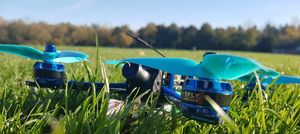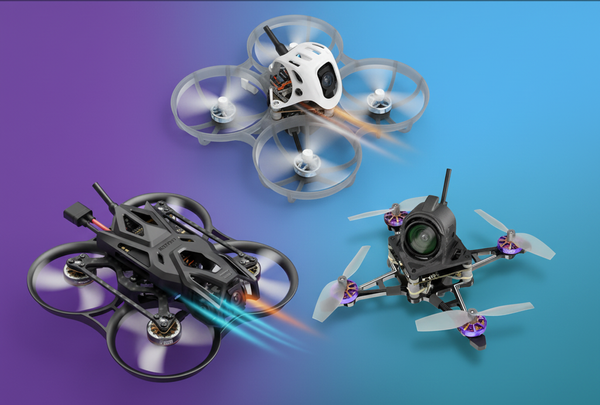With the ever-increasing selection of FPV quadcopter frames available on the market, it can be quite a difficult choice to find the best one for you. There are also a lot of snake-oil sales companies that oversell on some features that simply just don’t matter when it comes to an FPV quadcopter frame. This guide will hopefully show you how to cut through the hype to find the best possible frame for your needs.
Factors to consider
In an ideal world, you would have an indestructible frame that is also light as a feather. But unfortunately, we do not live in an ideal world so you will need to compromise when choosing between weight and durability as these are contradicting features. So you can’t have an indestructible frame that is also super light.
Let’s face it, you never really intend to crash but having a strong frame will be useful for when you do. Having a strong frame is ideal for beginners but this means the frame is heavier and less agile in the air. On the other hand, if you’re an experienced pilot you know you can compromise some durability for lower weight which makes your frame more agile in the air.
Here is a list of things you need to consider when choosing a FPV quadcopter frame:
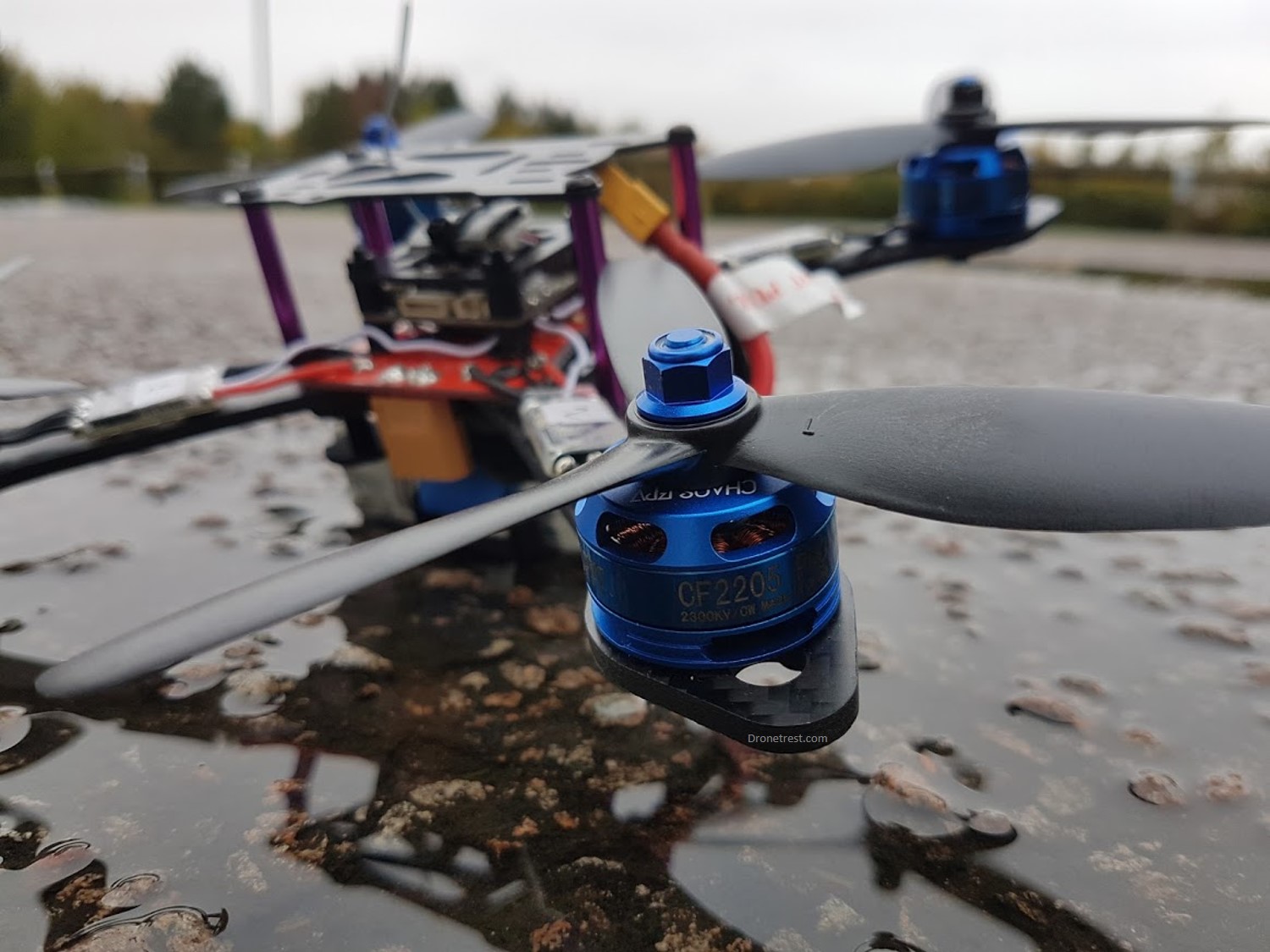
Frame sizes
The first step you’ll need to take is to decide what frame size you want. If you want to stay indoors you’ll need to keep under 120mm for safety reasons as you don’t want to lose an eye. If you are building a racing drone you’ll need a bigger frame to accommodate larger, more powerful motors to fly faster.
The name/title of the frame will normally include a number that corresponds to the size, also referred to as the wheelbase. This dimension is the distance between motors. As an example, the Qav220 or the Martian 220 are drones with a wheelbase of 220mm.

To simplify things a bit the drone community categorised the frame sizes. The size of the frame will define the size of propeller and motor you can use with it. These sizes are not a golden rule, but a general guide is given in the table below.:
| Frame size (Wheelbase) | Propeller | Motor | KV |
| 100mm | 2inch | 1102 – 1104 | 6000+ |
| 120mm | 3inch | 1104 – 1106 | 4000+ |
| 150 – 180mm | 4inch | 1306 – 1408 | 3000+ |
| 200-220mm | 5inch | 2204 – 2306 | 2100 – 2800 |
| 235 – 280mm | 6inch | 2205 – 2308 | 1600 – 2500 |
Why have a frame below 200mm?
When building a smaller quadcopter you will firstly be saving money on components as smaller components are usually cheaper. With a lighter frame (under 250g) you won’t be restricted by possible regulations. Furthermore, if you want to have the option to fly inside your quadcopter will need to be small. (usually under 100mm). When flying smaller quads outdoors, you get more flexibility as you can fly in smaller spaces and when you improve, it’ll be easier to practice flying through tight spaces! However there are some disadvantages to a smaller frame, it’s harder to solder the smaller components and you obviously have a lot less room on the frame to mount everything. Smaller frames also have shorter flight times with a typical 100mm build only flying for about 6 minutes max.
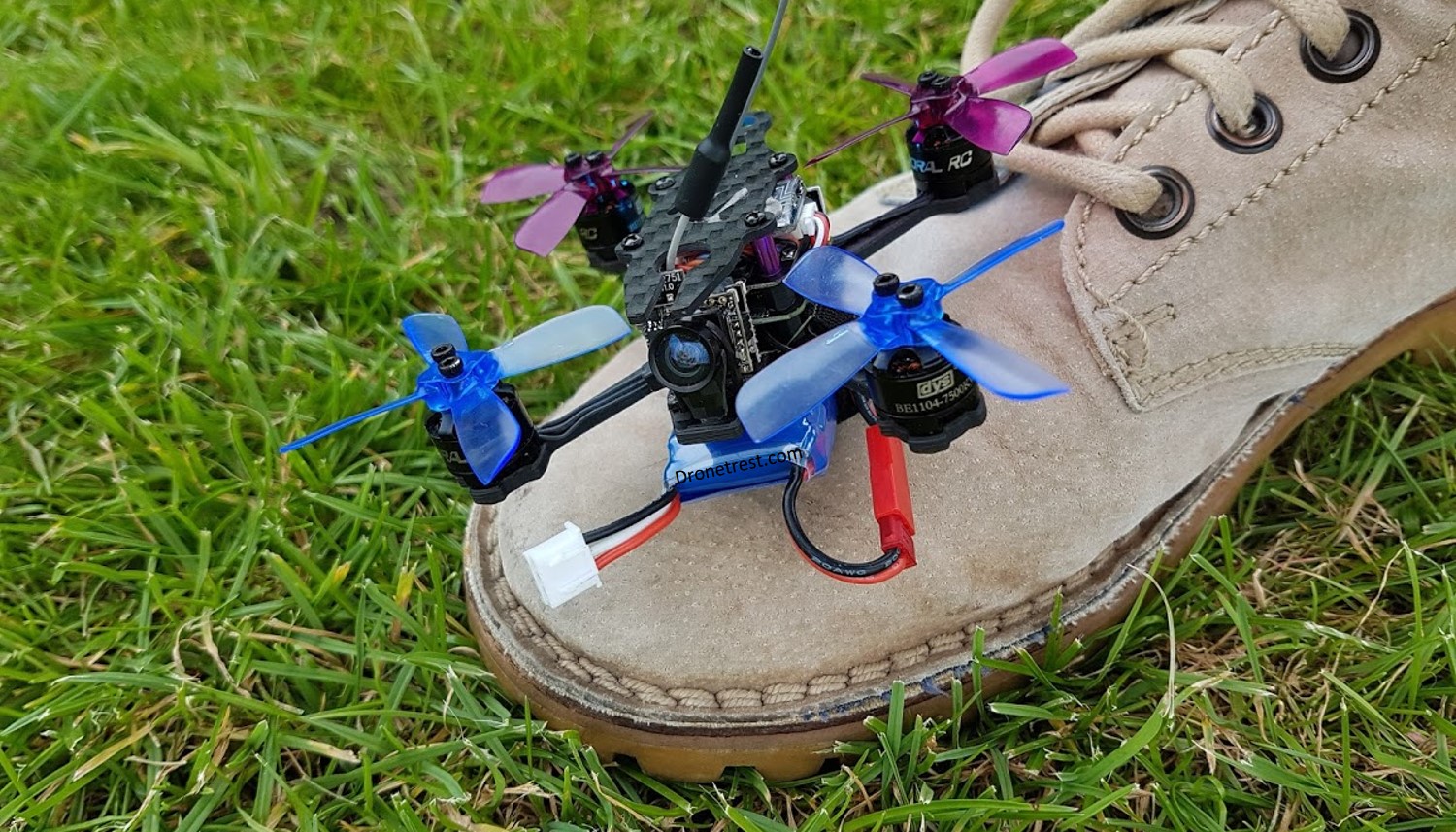
Advantages of building a frame above 200mm?
With a larger quadcopter, you’ll have higher flexibility with what size components you can use on your frame. You can also use larger more powerful motors giving you more speed and acceleration. Larger frames are also easier to work on as you have more space to mount all the electronics. This makes things a lot cleaner, allowing you to use bigger components that are easier to solder. Also because of the extra space and more powerful motors you can also have the option to mount a GoPro camera to record your flying antics in HD!

Layout
Some of the most important performance characteristics of the drone depend on the frames cosmetic design, these not only affect how the drone looks but play a part in giving the drone specific aerodynamic features!
The more noticeable design characteristic are the types of frames available, these mainly vary in three forms and each has different uses within the industry, H frame, X Frame and Stretch: Although there are alot of other less common frame types.
H Frame
The H frame is a far more spacious quadcopter which makes it a lot better to build on, because of space it also makes mounting extra components like a GPS module a lot cleaner. This design is used more commonly for freestyle frames as the flying style benefits from a top mounted (slug mounted) battery which keeps it protected as won’t be landing on your battery all the time.

True-H vs HX
Technically speaking, a true H frame is has arms perpendicular to the front (in the shape of an H), wherehas an H-X frame has the arm layout of an X, with the central body of an H frame. Buy for all intensive purposes these are still both H frames. Also most H frames (like the one in the image above) are still not true H frames as the arms are slightly angled.
X Frame
The advantage of an X frame design is to reduce the unnecessary weight that an H frame might have to enclose all its’ components. An X frame is a more aerodynamic model since it has less frame material in the middle, and will typically require the battery to be mounted underneath the frame when flying. A bottom mounted battery typically takes a bit more abuse as you land on it each time. This X frame design results in a smaller central area which makes things a bit more difficult to build on. With this less space, you may find that some X frames require components like a 4in1 ESC and a stackable video transmitter.

Plus Frame
This is one of the first quadcopter frame types but qas quickly abandoned for FPV as the front motor gets in the way of the camera.
Stretch Plus Frame
To solve the problem of the motor being in the field of view of your FPV camera, by stretching the front arm out abit more you can get away with this. There no real benefit to this type of frame other than it looks quite cool and is not very common to see.

Stretch X Frame
This frame is a lot like an X frame, however as the name suggests, the arms are stretched out a bit more forming a wheelbase that resembles an ellipse instead of a circle. This gives an advantage that you’ll feel when cornering as the quadcopter as its a lot more stable This is because the motors are spaced out a bit more so they have cleaner less turbulent air when flying fast. However, the cost of this spacing is a marginal increase in weight!

Removable arms?
It is important to consider how the arms are mounted to your FPV quadcopter frame should you need to replace something after a crash. There are two primary types of frame arms in quadcopters. One that uses a solid base plate, and others that have separate arms bolted onto the central frame.
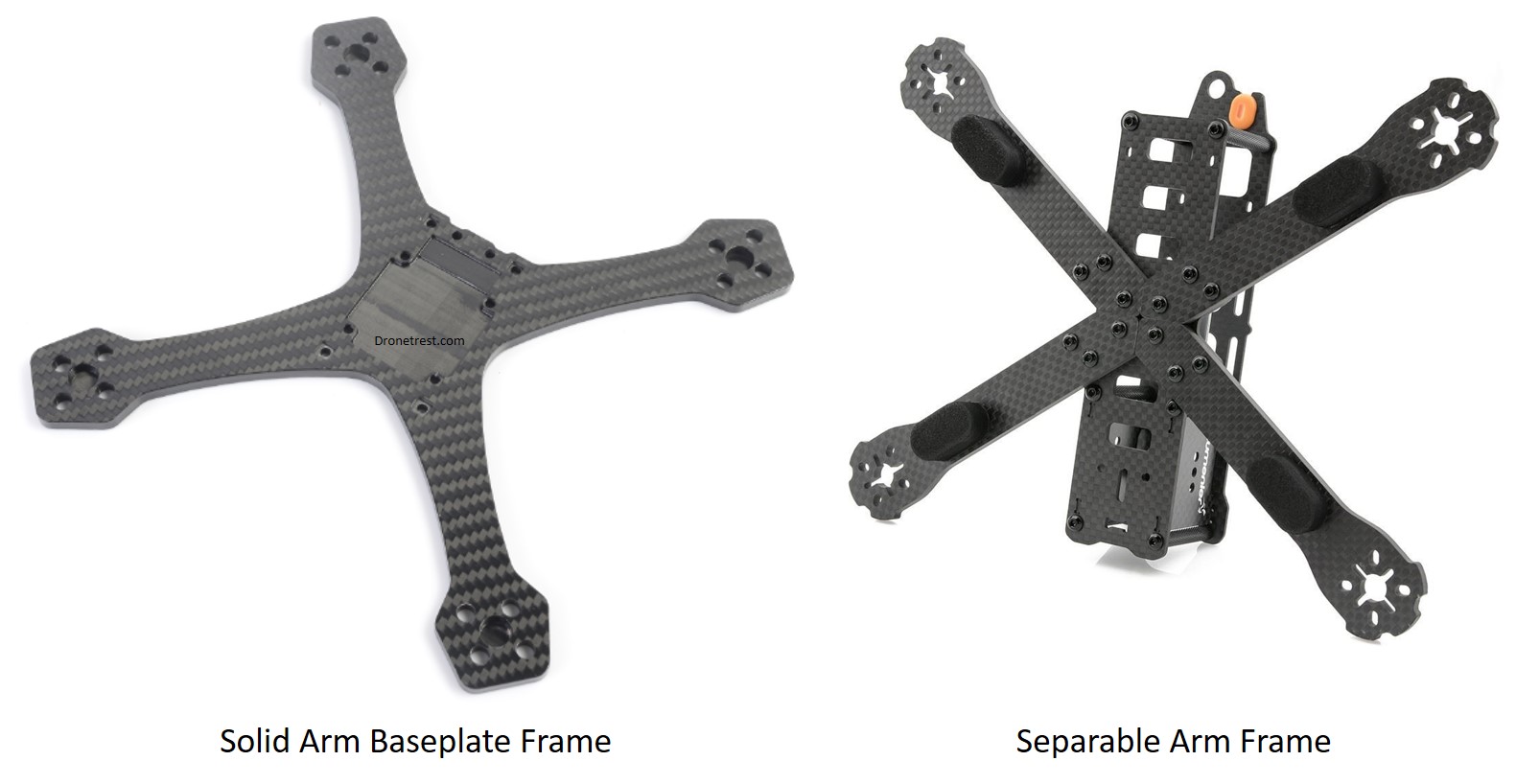
Solid base plate (unibody) frames
- More expensive
- Typically stronger as the image damage is spread throught the plate
- Most common in X frame layouts
- If you break one arm, you need to replate the entire base plate, and reattach all 4 motors.
Separated frame
- These frames are abit heavier (as they use extra screws/bolts)
- Improved serviceability and cheaper as you only need to fix the borken arm.
- Ability to change arm length if you want to change motors/props
Freestyle or Racing?
Freestyle
This mode of flying has quite a lenient description, it typically involves navigating your way through a range of tight spaces, under trees, through buildings or attempt certain tricks. However, you’re technically still flying freestyle if you just happen to go flying in a park to practice some new skills you’ve been trying on a simulator!

Racing
Racing has a more fitting description, this type of flying generally means you’ll be competing against other pilots through a FPV race course in the fastest time possible.
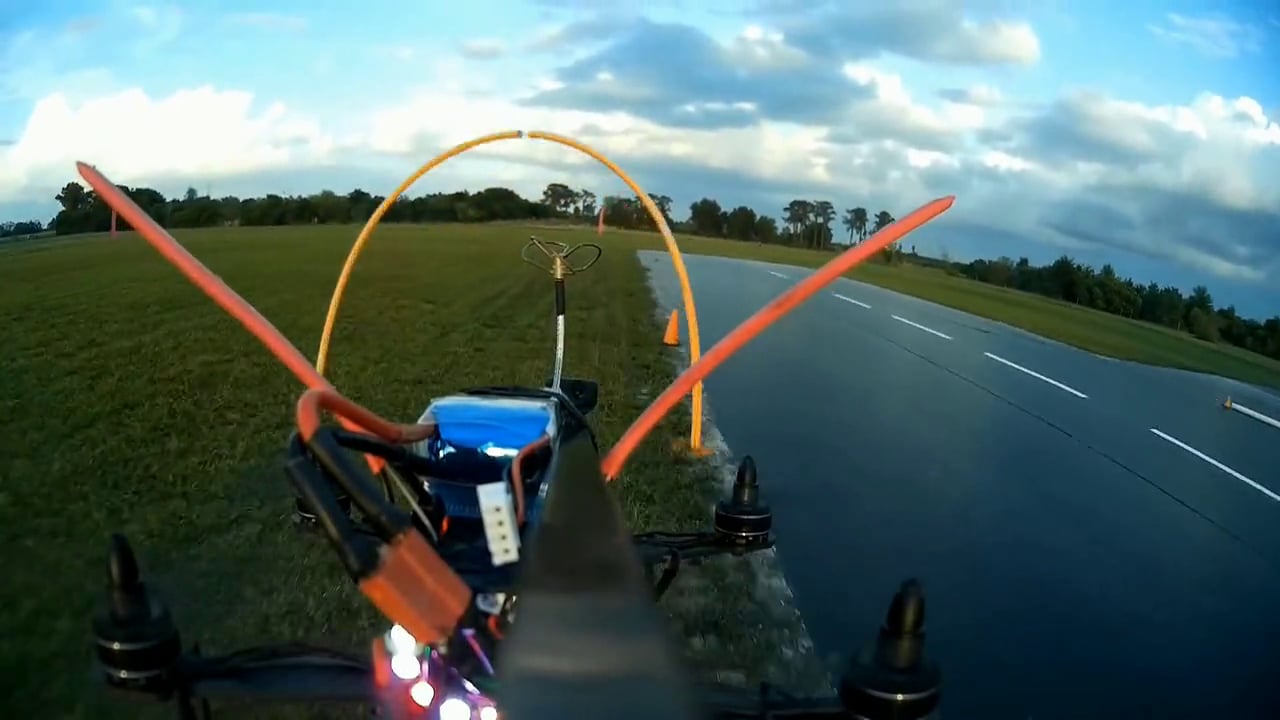
But does it even matter?
Well, the short answer is not really. A frame designed for racing won’t prohibit you from flying freestyle, but it should be noted that frame design will be targeted towards a certain flying style. For example an FPV racing frame will sacrifice some durability to allow it to be abit more streamlined, or not include an HD camera mount at all. Whereas a freetyle frame might be designe daround a gorpo mount so you can get nice HD footage.
Frame Weight
It’s hard to put a number on the right weight you should be looking for, but obviously, a stronger frame will have a bit more weight to it. If you’re building a smaller drone below 100mm anything over 100g is getting a bit excessive, however, for a 210mm frame, 100 grams would be very acceptable. Now every frame will have its’ own way of minimising impact damage, but the more efficient way to link strength and weight is to look at the thickness of the carbon fiber:
| Frame size (Wheelbase) | Thickeness |
| Less than 100mm | 2- 4 mm |
| 100 – 180mm | 3 -4 mm |
| 200 – 280mm | 5 – 6mm |
It should also be noted that in some countries there are weight restrictions on drones so it is worth checking before you go out and buy something. Currently in USA (and soon in UK), if your drone is over 250g, you need to register it with the government. This can sometimes make it more appealing to build a tiny lightweight quad to get your daily fix of FPV flying without any restrictions on where you can fly.
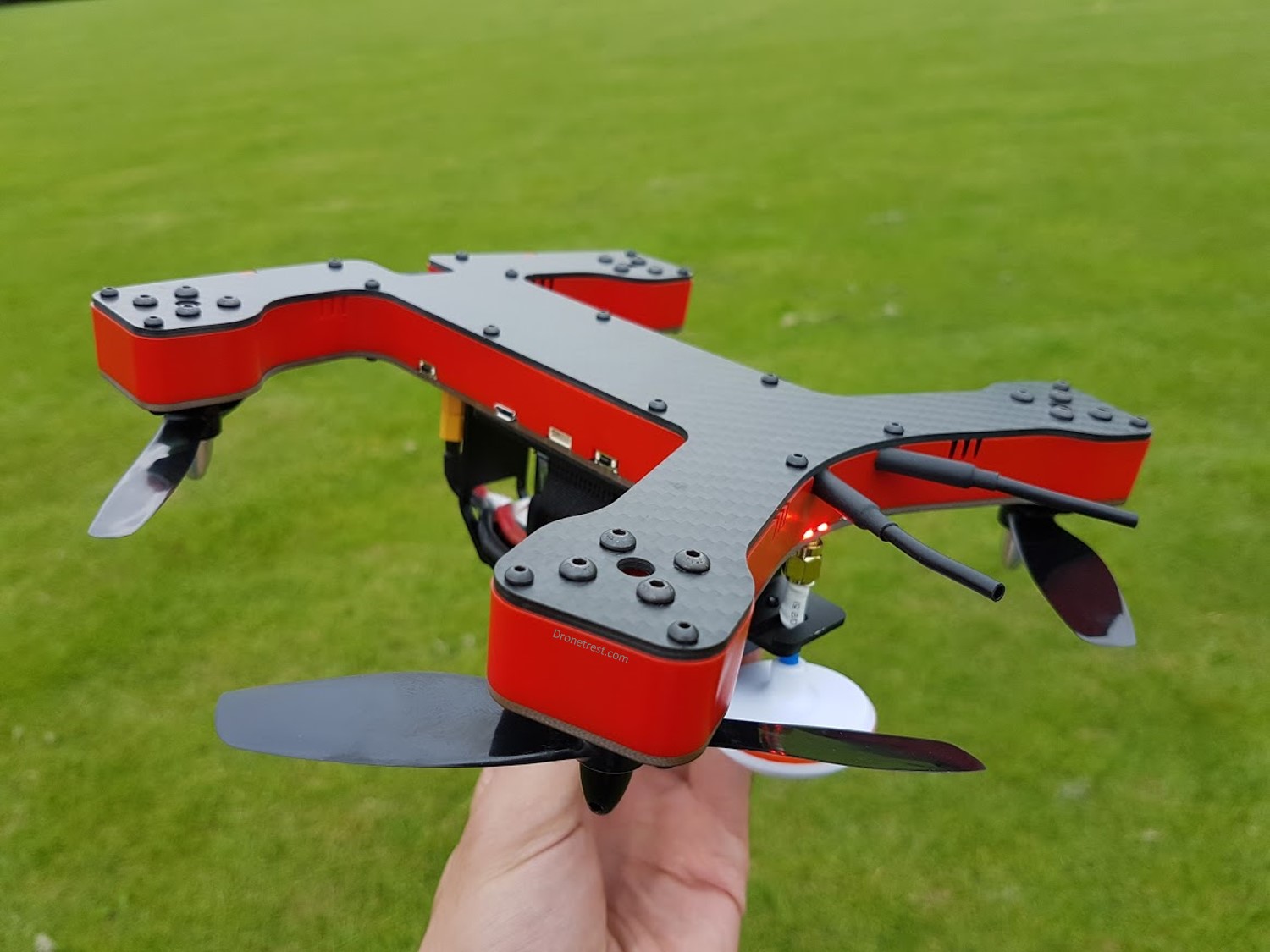
The most difficult part of investing in a frame is knowing how durable it will be in a crash. Despite any marketing hype, the only real test is an actual crash. I am not suggesting you try this with every frame, but it’s a good idea to look at user reviews and previous comments anything that can help reassure that you’ll be buying a good frame as some of the design features that manufacturers quote for durability don’t always apply in the real world, for example; when you crash a at 100 + MPH, there’s not much that will prevent things from breaking! All us fpv pilots are eager to help each other out and promote the sport so if something is crap you will know about it on our forums
The little things to look for!
Now that we have identified a few core characteristics about frames in general, here is a list of a few other minor things you should consider when making your purchase decision.
Power distribution
The PDB or power distribution board is an important component you’ll need to think about, it roots power as the centrepiece of your build. You may find your flight controller or ESC stack already works as a PDB, this is getting more common as it can help reduce weight. However, a typical PDB will have three types of output power sources, your standard 5v for your flight controller, a 12v/10v for a VTX and perhaps a RAW output with no voltage regulation. (battery voltage) – to learn more checkout our PDB buying guide
Standoff hole spacing
Stand off holes are used to mount everything on your frame, this is important as you’ll need to buy the right components for the size used on your model. Smaller quadcopters may use a 26x26mm stack whereas most use a 36×36 tower, you’ll need to check this to make sure your flight controller and other stackable electronics are compatible. You may also be interested in fitting vibration dampening pads to help the performance of your flight controller, this will allow you to fly better, reduce noise and tune your PIDs easier.

FPV Camera mount
Another thing to look out for is the type of FPV camera you can use with the frame as some frames are only compatible with certain cameras like the HS1190, HS1177, Runcam Eagle, Owl, Swift. Fitting your FPV camera normally includes using a dedicated part of the frame or a mounting bracket, these will be included with both kits.

You’ll also want to know what tilt you can achieve on the frame, otherwise, you may be limited to a certain speed. As you may be aware, the camera angle allows will have a great effect on your pitch so this is quite an important factor to look out for. If it does not tilt high enough, you will spend most of your flight staring at the ground when tilted forward.
It is also worth looking at how well protected/enclosed your FPV camera will be in the event of a crash as some frames offer no protection for the camera at all.

Vtx mount
Now that you’ve got your camera figured out, how will you mount your VTX? Does the frame have fittings for the antenna and how will you be able to enclose all of these components? This is important as you may actually damage the VTX in a crash if it’s not properly protected!

Motor mount
One of the more important characteristics for smaller frames is the motor mount, will the frame be able to support the motor size you’ve chosen? Refer back to table I provided earlier as a rough estimate of this! But if unsure the manufacturer/shop should be able to answer you about this.
Certain frames might also offer changes to the mounting of your motors, typically if a frame advertises titled motors it means they’ll be mounted at a 10-degree incline. Some frame kits might offer motor dampening to reduce the amount of vibration produced smoothing out your PIDs as mentioned earlier.
Can you attach a Gopro?
If you would like to record your FPV antics in HD, having the ability to mount a action camera like a GoPro session can be important. So it’s worth checking if a mount is included with the frame, or if you have you buy one separately.
When looking at the mount it’s also worth considering if it is a hard or soft mount.
Some frames include the option. The more common hard mount methods include fixed mounting panels, holdings or loose grips where the camera is directly attached to the frame.
With a soft mount, there is some soft material like silicone, foam, or TPU to absorb some vibrations, reducing the jellow effect on your videos. However, soft mounts are often a bit weaker than hard mounts, so in a bad crash they can get torn off, but this itself can prevent your expensive gopro from taking the full brunt of a crash..
Price
What does a price tag actually tell you about the frame and how do you know you’re not helping a company power its’ advertising scheme. Just because a frame costs a lot, doesn’t mean it was expensive to produce. As I mentioned, you should look for the above when trying to determine how much a frame is really worth.
Some companies may offer warranties for their products “Lifetime warranty “, but with an inflated initial price tag and expensive shipping fees you may end up paying out more than it’s worth. So perhaps ask yourself how many frames you could buy for one of the expensive models?
I’m not suggesting you go out your way to buy as many clone frames as possible because in general, the reason the cloned frame is cheap is due to the time the company hasn’t spent investing in researching a model, choosing the best designs and manufacturing that frame. In addition, you may also find these frames to be inferior in quality. However, both have their place in the market and still allow for expansion in the hobby, as an example if you’re a student you probably can’t afford to spend £100 on a new frame.
Thanks for Reading
Thanks for reading and hope this has helped educate you on choosing your next frame. If you have any questions or comments just let us know!







